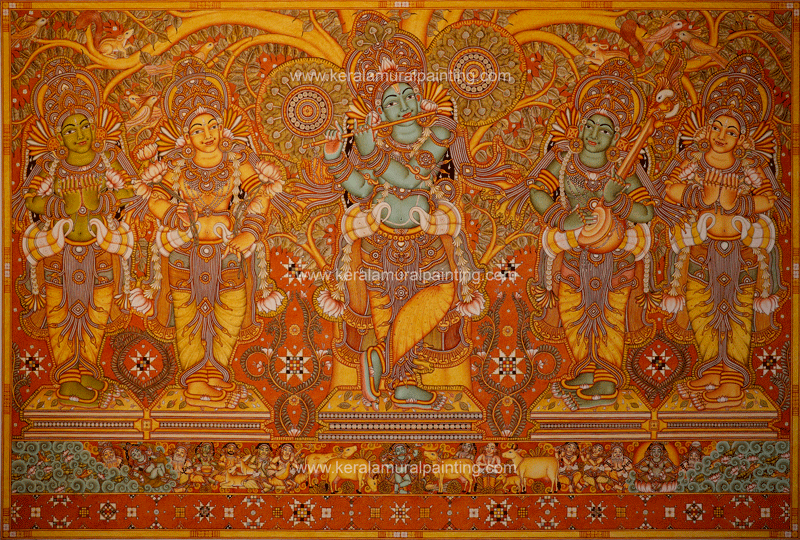
Kerala, often referred to as “God’s Own Country,” is not only known for its lush landscapes and serene backwaters but also for its vibrant cultural heritage. One of the most captivating facets of Kerala’s artistic tradition is mural painting. Rooted in history and deeply entwined with the state’s cultural tapestry, mural painting in Kerala is a visual feast that tells tales of mythology, spirituality, and the rich history of this picturesque region. Mural painting in Kerala has a history that dates back over a thousand years. Influenced by various artistic styles, including Dravidian and Tantric traditions, these murals are visual narratives that adorn the walls of temples, churches, and palaces. The earliest murals were created using natural pigments derived from minerals, stones, and plant extracts, showcasing the resourcefulness of the artists of that era.
The themes of Kerala’s mural paintings primarily revolve around Hindu mythology and legends. The depiction of deities such as Lord Krishna, Shiva, Vishnu, and goddesses like Durga and Saraswaty is common. These artworks also showcase scenes from epics like the Ramayana and Mahabharata, providing a visual representation of the ancient stories that have been passed down through generations. One of the distinctive features of Kerala murals is their unique color palette. The artists employ vibrant hues such as red, green, yellow, and blue, creating a striking contrast against the earthy tones of the walls. The use of gold leaf embellishments adds a touch of opulence, creating an ethereal effect that enhances the overall visual appeal. Temples in Kerala serve as the primary canvas for these exquisite mural paintings. The Padmanabhapuram Palace, Sree Padmanabhaswamy Temple in Thiruvananthapuram, and the Guruvayur Temple are just a few examples of places where these murals can be admired. The meticulous detailing and precision with which these murals are created reflect the devotion and skill of the artists.
While these murals have stood the test of time, there has been a growing awareness of the need for their preservation. Conservationists and art enthusiasts are working together to protect these treasures from the effects of weathering and decay. Initiatives are being taken to document and digitally archive these murals, ensuring that future generations can appreciate and understand the cultural significance they hold.

In recent times, mural painting has transcended its traditional boundaries and found expression in contemporary art. Artists are incorporating mural techniques into modern settings, creating a fusion of the ancient and the avant-garde. This dynamic evolution ensures that the legacy of Kerala’s mural paintings continues to thrive and adapt to the changing times.
Kerala’s mural paintings are not merely strokes on a wall; they are a living testament to the state’s cultural richness and artistic legacy. As these vibrant narratives continue to captivate both locals and tourists alike, they serve as a bridge between the past and the present, connecting generations through the timeless language of art. The colors of tradition embedded in these murals are not just pigments; they are threads that weave together the intricate fabric of Kerala’s cultural heritage.

